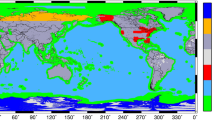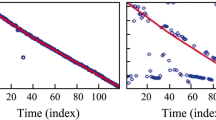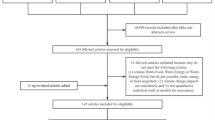Abstract
This paper proposes a hybrid method, called CNOP–4DVar, for the identification of sensitive areas in targeted observations, which takes the advantages of both the conditional nonlinear optimal perturbation (CNOP) and four-dimensional variational assimilation (4DVar) methods. The proposed CNOP–4DVar method is capable of capturing the most sensitive initial perturbation (IP), which causes the greatest perturbation growth at the time of verification; it can also identify sensitive areas by evaluating their assimilation effects for eliminating the most sensitive IP. To alleviate the dependence of the CNOP–4DVar method on the adjoint model, which is inherited from the adjoint-based approach, we utilized two adjoint-free methods, NLS-CNOP and NLS-4DVar, to solve the CNOP and 4DVar sub-problems, respectively. A comprehensive performance evaluation for the proposed CNOP–4DVar method and its comparison with the CNOP and CNOP–ensemble transform Kalman filter (ETKF) methods based on 10 000 observing system simulation experiments on the shallow-water equation model are also provided. The experimental results show that the proposed CNOP–4DVar method performs better than the CNOP–ETKF method and substantially better than the CNOP method.
摘要
本文将非线性最优扰动方法(CNOP)与四维变分同化技术(4DVar)相融合, 提出了一种确定目标观测敏感区域的新方法CNOP-4DVar. CNOP-4DVar方法首先利用CNOP方法确定造成检验时刻最大模式扰动的最优初始扰动CNOP, 进而利用4DVar方法依照消除最优初始扰动同化效果的方式计算不同区域的敏感指数, 从而根据敏感指数的降序排列确定观测时刻的敏感区域. 不难看出, 以上的CNOP-4DVar由求解非线性最优扰动CNOP以及四维变分同化4DVar两个非线性最优化问题组成, 一般而言这类方法都严重依赖于伴随模式、计算与编程代价昂贵, 这一难题可以采用集合的非线性最小二乘策略, 也就是分别利用集合非线性最小二乘CNOP(NLS-CNOP)方法以及4DVar (NLS-4DVar)方法加以解决, 从而给出了联合目标观测方法CNOP-4DVar的无伴随依赖、计算经济的解决方案. 完备的数值表明该方法明显优于目前通常采用的ETKF目标观测方法, 在天气预报于气候预测中的应用潜力巨大.
Similar content being viewed by others
References
Aberson, S. D; 2003: Targeted observations to improve operational tropical cyclone track forecast guidance. Mon. Wea. Rev; 131, 1613–1628, https://doi.org/10.1175//2550.1.
Aberson, S. D; S. J. Majumdar, C. A. Reynolds, and B. J. Etherton, 2011: An observing system experiment for tropical cyclone targeting techniques using the global forecast system. Mon. Wea. Rev; 139, 895–907, https://doi.org/10.1175/2010MWR3397.1.
Ancell, B; and G. J. Hakim, 2007: Comparing adjoint- and ensemble-sensitivity analysis with applications to observation targeting. Mon. Wea. Rev; 135, 4117–4134, https://doi.org/10.1175/2007MWR1904.1.
Bishop, C. H; and Z. Toth, 1999: Ensemble transformation and adaptive observations. J. Atmos. Sci; 56, 1748–1765, https://doi.org/10.1175/1520-0469(1999)056<1748:ETAAO>2.0.CO;2.
Bishop, C. H; B. J. Etherton, and S. J. Majumdar, 2001: Adaptive sampling with the ensemble transform Kalman filter. Part I: Theoretical aspects. Mon. Wea. Rev; 129, 420–436, https://doi.org/10.1175/1520-0493(2001)129<0420:ASWTET>2.0.CO;2.
Chou, K. H; C. C. Wu, P. H. Lin, S. D. Aberson, M. Weissmann, F. Harnisch, and T. Nakazawa, 2011: The impact of dropwindsonde observations on typhoon track forecasts in DOT-STAR and T-PARC. Mon. Wea. Rev; 139, 1728–1743, https://doi.org/10.1175/2010MWR3582.1.
Daescu, D. N; and I. M. Navon, 2004: Adaptive observations in the context of 4D-Var data assimilation. Meteor. Atmos. Phys; 85, 205–226, https://doi.org/10.1007/s00703-003-0011-5.
Dennis Jr J. E; and R. B. Schnabel, 1996: Numerical Methods for Unconstrained Optimization and Nonlinear Equations. SIAM, 378 pp.
Evensen, G; 1994: Sequential data assimilation with a nonlinear quasi-geostrophic model using Monte Carlo methods to forecast error statistics. J. Geophys. Res. Oceans, 99, 10 143–10 162, https://doi.org/10.1029/94JC00572.
Hossen, M. J; I. M. Navon, and D. N. Daescu, 2012: Effect of random perturbations on adaptive observation techniques. International Journal for Numerical Methods in Fluids, 69(1), 110–123, https://doi.org/10.1002/fld.2545.
Houtekamer, P. L; and H. L. Mitchell, 2001: A sequential ensemble Kalman filter for atmospheric data assimilation. Mon. Wea. Rev; 129, 123–137, https://doi.org/10.1175/1520-0493(2001)129<0123:ASEKFF>2.0.CO;2.
Joly, A; and Coauthors, 1997: The fronts and Atlantic storm-track experiment (FASTEX): Scientific objectives and experimental design. Bull. Amer. Meteor. Soc; 78, 1917–1940, https://doi.org/10.1175/1520-0477(1997)078<1917:TFAAST>2.0.CO;2.
Joly, A; and Coauthors, 1999: Overview of the field phase of the fronts and Atlantic Storm-Track EXperiment (FASTEX) project. Quart. J. Roy. Meteor. Soc; 125, 3131–3163, https://doi.org/10.1002/qj.49712556103.
Langland, R. H; and G. D. Rohaly, 1996: Adjoint-based targeting of observations for FASTEX cyclones. Proc. Seventh Conf. on Mesoscale Processes, United Kingdom, Amer. Meteor. Soc; 359–371.
Langland, R. H; R. Gelaro, G. D. Rohaly, and M. A. Shapiro, 1999a: Targeted observations in FASTEX: Adjoint-based targeting procedures and data impact experiments in IOP17 and IOP18. Quart. J. Roy. Meteor. Soc; 125, 3241–3270, https://doi.org/10.1002/qj.49712556107.
Langland, R. H; and Coauthors, 1999b: The North Pacific experiment (NORPEX-98): Targeted observations for improved North American weather forecasts. Bull. Amer. Meteor. Soc; 80, 1363–1384, https://doi.org/10.1175/1520-0477(1999)080<1363:TNPENT>2.0.CO;2.
Majumdar, S. J; 2016: A review of targeted observations. Bull. Amer. Meteor. Soc; 97, 2287–2303, https://doi.org/10.1175/BAMS-D-14-00259.1.
Matsuno, T; 1966: Numerical integrations of the primitive equations by a simulated backward difference method. J. Meteor. Soc. Japan, 44, 76–84.
Mu, M; 2013: Methods, current status, and prospect of targeted observation. Science China: Earth Sciences, 56, 1997–2005, https://doi.org/10.1007/s11430-013-4727-x.
Mu, M; W. S. Duan, and B. Wang, 2003: Conditional nonlinear optimal perturbation and its applications. Nonlinear Processes in Geophysics, 10, 493–501, https://doi.org/10.5194/npg-10-493-2003.
Mu, M; F. F. Zhou, and H. L. Wang, 2009: A method for identifying the sensitive areas in targeted observations for tropical cyclone prediction: Conditional nonlinear optimal perturbation. Mon. Wea. Rev; 137, 1623–1639, https://doi.org/10.1175/2008MWR2640.1.
Palmer, T. N; R. Gelaro, J. Barkmeijer, and R. Buizza, 1998: Singular vectors, metrics, and adaptive observations. J. Atmos. Sci; 55, 633–653, https://doi.org/10.1175/1520-0469(1998)055<0633:SVMAAO>2.0.CO;2.
Pu, Z. X; E. Kalnay, J. Sela, and I. Szunyogh, 1997: Sensitivity of forecast errors to initial conditions with a quasi-inverse linear method. Mon. Wea. Rev; 125, 2479–2503, https://doi.org/10.1175/1520-0493(1997)125<2479:SOFETI>2.0.CO;2.
Qin, X. H; and M. Mu, 2011: A study on the reduction of forecast error variance by three adaptive observation approaches for tropical cyclone prediction. Mon. Wea. Rev; 139, 2218–2232, https://doi.org/10.1175/2010MWR3327.1.
Qiu, C. J; A. M. Shao, Q. Xu, and L. Wei, 2007: Fitting model fields to observations by using singular value decomposition: An ensemble-based 4DVar approach. J. Geophys. Res. At-mos; 112, D11105, https://doi.org/10.1029/2006JD007994.
Rabier, F; H. Järvinen, E. Klinker, J. F. Mahfouf, and A. Simmons, 2000: The ECMWF operational implementation of four-dimensional variational assimilation. I: Experimental results with simplified physics. Quart. J. Roy. Meteor. Soc; 126, 1143–1170, https://doi.org/10.1002/qj.49712656415.
Tian, X. J; and Z. H. Xie, 2012: Implementations of a square-root ensemble analysis and a hybrid localisation into the POD-based ensemble 4DVar. Tellus A, 64, 18375, https://doi.org/10.3402/tellusa.v64i0.18375.
Tian, X. J; and X. B. Feng, 2015: A non-linear least squares enhanced POD-4DVar algorithm for data assimilation. Tellus A, 67, 25340, https://doi.org/10.3402/tellusa.v67.25340.
Tian, X. J; Z. H. Xie, and A. G. Dai, 2008: An ensemble-based explicit four-dimensional variational assimilation method. J. Geophys. Res. Atmos; 113, D21124, https://doi.org/10.1029/2008JD010358.
Tian, X. J; Z. H. Xie, and A. G. Dai, 2010: An ensemble conditional nonlinear optimal perturbation approach: Formulation and applications to parameter calibration. Water Resour. Res; 46, W09540, https://doi.org/10.1029/2009WR008508.
Tian, X. J; Z. H. Xie, and Q. Sun, 2011: A POD-based ensemble four-dimensional variational assimilation method. Tellus A, 63, 805–816, https://doi.org/10.1111/j.1600-0870.2011.00529.x.
Tian, X. J; X. B. Feng, H. Q. Zhang, B. Zhang, and R. Han, 2016: An enhanced ensemble-based method for computing CNOPs using an efficient localization implementation scheme and a two-step optimization strategy: Formulation and preliminary tests. Quart. J. Roy. Meteor. Soc; 142, 1007–1016, https://doi.org/10.1002/qj.2703.
Tian, X. J; and X. B. Feng, 2017: A nonlinear least-squares-based ensemble method with a penalty strategy for computing the conditional nonlinear optimal perturbations. Quart. J. Roy. Meteor. Soc; 143, 641–649, https://doi.org/10.1002/qj.2946.
Tian, X. J; H. Q. Zhang, X. B. Feng, and Y. F. Xie, 2018: Nonlinear least squares En4DVar to 4DEnVar methods for data assimilation: Formulation, analysis, and preliminary evaluation. Mon. Wea. Rev; 146, 77–93, https://doi.org/10.1175/MWR-D-17-0050.1.
Wu, C. C; K. H. Chou, P. H. Lin, S. D. Aberson, M. S. Peng, and T. Nakazawa, 2007a: The impact of dropwindsonde data on typhoon track forecasts in DOTSTAR. Wea. Forecasting, 22, 1157–1176, https://doi.org/10.1175/2007WAF2006062.1.
Xu, Q; 1996: Generalized adjoint for physical processes with parameterized discontinuities. Part I: Basic issues and heuristic examples. J. Atmos. Sci; 53, 1123–1142, https://doi.org/10.1175/1520-0469(1996)053<1123:GAFPPW>2.0.CO;2.
Zhang, H. Q; and X. J. Tian, 2018a: An efficient local correlation matrix decomposition approach for the localization implementation of ensemble-based assimilation methods. J. Geo-phys. Res. Atmos; 123, 3556–3573, https://doi.org/10.1002/2017JD027999.
Zhang, H. Q; and X. J. Tian, 2018b: A multigrid nonlinear least squares four-dimensional variational data assimilation scheme with the advanced research weather research and forecasting model. J. Geophys. Res. Atmos; 123, 5116–5129, https://doi.org/10.1029/2017JD027529.
Zhang, Y; Y. F. Xie, H. L. Wang, D. H. Chen, and Z. Toth, 2016: Ensemble transform sensitivity method for adaptive observations. Adv. Atmos. Sci; 33(1), 10–20, https://doi.org/10.1007/s00376-015-5031-9.
Zhou, F. F; and M. Mu, 2011: The impact of verification area design on tropical cyclone targeted observations based on the CNOP method. Adv. Atmos. Sci; 28(5), 997–1010, https://doi.org/10.1007/s00376-011-0120-x.
Acknowledgements
The work of the first author was partially supported by the National Key R&D Program of China (Grant No. 2016YFA0600203) and the National Natural Science Foundation of China (Grant No. 41575100).
Author information
Authors and Affiliations
Corresponding author
Additional information
Article Highlights
• The proposed CNOP–4DVar method takes the advantages of both the CNOP and 4DVar methods.
• CNOP–4DVar identifies sensitive areas by evaluating their assimilation effects for eliminating the most sensitive IPs.
• Two adjoint-free methods are utilized to solve the CNOP and 4DVar sub-problems, respectively.
Rights and permissions
About this article
Cite this article
Tian, X., Feng, X. An Adjoint-Free CNOP–4DVar Hybrid Method for Identifying Sensitive Areas Targeted Observations: Method Formulation and Preliminary Evaluation. Adv. Atmos. Sci. 36, 721–732 (2019). https://doi.org/10.1007/s00376-019-9001-5
Received:
Revised:
Accepted:
Published:
Issue Date:
DOI: https://doi.org/10.1007/s00376-019-9001-5




